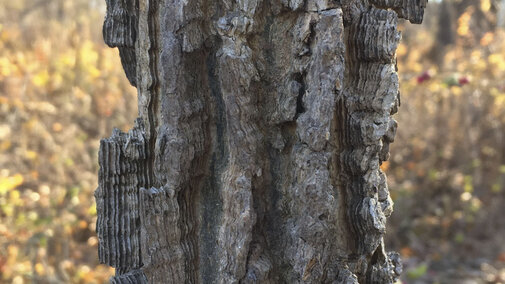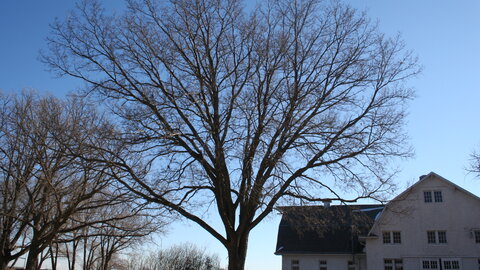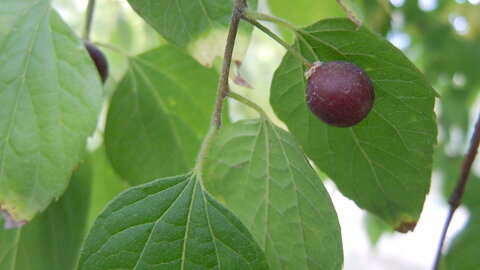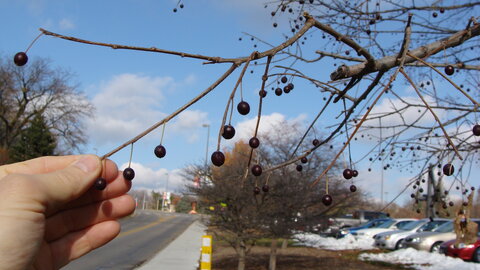Celtis occidentalis
,
Deciduous
Hackberry may be the king of hard-working trees. It can provide a canopy of shade for decades at a time, and ask for almost nothing
in return. Additionally, its deep root system makes common hackberry useful for preventing soil erosion on disturbed sites.

Where To Grow
Common hackberry is able to grow in a variety of sites and soil types. Although it grows best in moist soils near stream banks and on
floodplains, it will grow on dry, less fertile soils. Annual height growth will decrease in drier soils. Common hackberry can also
survive long periods of drought due to its deep root system. It will not occur on sites with a permanently high water table, but mature
trees can survive periods of excessive flooding. Because of its
tall, arching habit, Hackberry makes an almost ideal tree for planting along streets and in yards and parks.
Suitable to plant throughout the state.
Size at Maturity
Tree Height
Tree Spread
50-70'
50-70'
Wildlife Benefits
Wild turkey, ring-necked pheasant, quail, grouse, lesser prairie chicken, cedar waxwing, robins, and other bird species
consume common hackberry fruit, which persists throughout the winter. Small mammals also consume the fruit. Deer will
browse common hackberry leaves in the absence of preferred browse species. Common hackberry provides good cover for species such as mule
deer, white-tailed deer, upland game birds, small non-game birds, and small mammals.
Additional Considerations
Hackberry is not without problems. Poorly attached branches can be prone to ice-storm splitting and the loss of large limbs can
lead to quick and extensive decay within the trunk and large branches.
Interesting Facts
The fruits were also important to Native Americans with many tribes using them to make pemmican.


